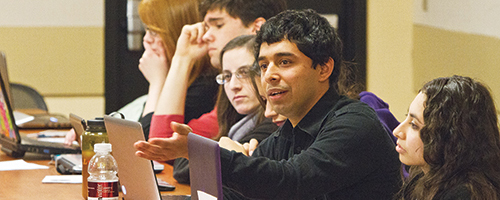As Election Day nears for national, state and local races, candidates are frantically catering to their constituents for their votes and support.
Oregon leads the nation in young voters
As Election Day nears for national, state and local races, candidates are frantically catering to their constituents for their votes and support.
There is one voting bloc that hasn’t always been easy to reach: young people.
Numbers show that in recent years, however, students and youth in Oregon have become more engaged in the political process.
Since the 2008 election, some might say the tone of youth political discussion has become more cynical. But this hasn’t translated to fewer students showing up to vote on Election Day.
“I would say that the enthusiasm that students are showing in Oregon is much higher than what people think,” said Dylan Jambrek, the Oregon Student Association communications director.
A national study by the Center for Information and Research on Civic Learning and Engagement (a Massachusetts-based research institute) showed that more people between the ages of 18 and 29 are voting than were 10 years ago.
More specifically, the study showed that the state of Oregon leads the nation in youth voter turnout with 35.7 percent in 2010, followed by North Dakota, South Carolina and Minnesota.
One of the reasons the Oregon youth turnout is so high may be the ease of registering to vote. The state implemented an online registration system in March 2010.
Student government and student advocacy groups like the Associated Students of Portland State University and OSA have also run voter registration drives, contributing to the high turnout, said Tiffany Dollar, PSU’s student body president.
ASPSU broke a record last year with 9.32 percent of the student population participating in that year’s student government elections.
According to Dollar, one of every 50 registered Oregon voters was registered by university student governments or by the OSA.
Richard Clucas, a professor of political science who teaches several American politics classes at PSU, said it’s hard to get young people involved until they’ve reached a certain age.
Clucas refers any youth cynicism toward government to young people feeling unaddressed by the politicians they elect. “They just see the arguments on television, the debates, the advertisements, and all of them don’t seem to be addressing the issues that matter to [young people],” he said.
On the other hand, students are beginning to see the relationship between voting and university-related consequences such as higher tuition and fees, as well as the diversion of funding out of the public education system, Jambrek said.
A 3.4 percent increase in tuition and fees at PSU was announced in June 2012.
“I think students are seeing a big connection in the election and the state of their country and what happens to them on campus,” Jambrek said. “I think that we are going to see an overall increase in students voting.”




